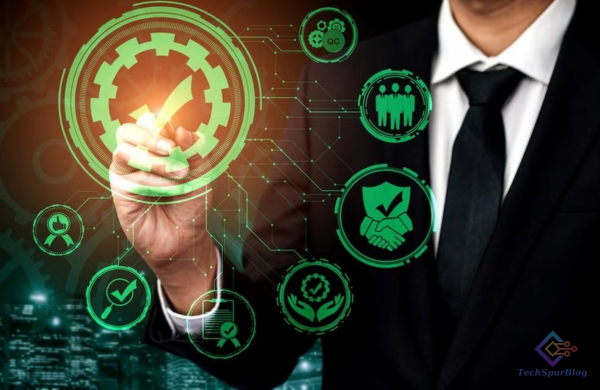
In an age where information fuels our decisions and interactions, the concept of verification has taken on a paramount role. Verification, at its core, involves the meticulous process of confirming the truth, authenticity, and accuracy of data, claims, or identities. It is the bedrock upon which trust is built, influencing many domains, including finance, employment, education, and legal transactions.
The significance of verification extends beyond mere validation; it ensures the reliability of information, safeguards against fraud, and underpins the integrity of countless processes. As traditional verification methods grapple with inherent challenges, technology integration emerges as a transformative force, reshaping the landscape of verification practices and bestowing an array of benefits that amplify the efficacy and dependability of these processes.
Benefits of Using Technology in Verifications
In an increasingly interconnected world, technology’s integration into verification processes has ushered in a new era of efficiency and reliability. This evolution is accompanied by many advantages extending far beyond traditional methods. Here are some of the key benefits that technology brings to verifications:
Increased Efficiency
Technology’s ability to automate and streamline verification procedures is a game-changer for businesses and institutions. Automation expedites the process, reducing the time required to verify information and consequently increasing the overall efficiency of operations. This newfound efficiency saves time and resources, allowing organizations to focus on more value-added tasks.
Improved Accuracy
The precision that technology brings to verifications is unparalleled. By harnessing the power of algorithms and programmed logic, technology ensures that verifications consistently adhere to specific rules and procedures. The risk of human error is significantly diminished, leading to more accurate results and reducing the chances of discrepancies arising from manual processes.
Reduced Fraud
One of the most critical advantages of incorporating technology in verifications is its robust ability to detect and prevent fraudulent activities. Advanced systems can recognize patterns and anomalies that may indicate fraudulent behavior. These systems act as vigilant gatekeepers, safeguarding businesses from potential financial losses and reputational damage.
Improved Compliance
In an increasingly regulated environment, businesses grapple with compliance requirements that demand meticulous verification processes. Technology offers a solution by facilitating adherence to regulations such as Know Your Customer (KYC) and Anti-Money Laundering (AML) guidelines. Automated processes ensure that all necessary checks are conducted, reducing the risk of regulatory breaches and associated penalties.
Enhanced Customer Experience
The integration of technology in verifications is not just beneficial for organizations; it enhances the customer experience as well. Customers no longer need to endure lengthy, paper-heavy verification processes. Instead, they can enjoy a seamless, digitized experience that reduces friction and ensures a smoother journey from start to finish.
Real-time Accessibility
The real-time nature of technology-enabled verifications is another notable benefit. Digital systems provide instant access to verified information, eliminating delays caused by traditional methods like mailing or manual data entry. This instantaneous access is valuable in time-sensitive scenarios like job applications or financial transactions.
Also Read: How People Start Valuing Digital Safety, and What is the Price
Types of Technology Used in Verifications

Technology has paved the way for innovative solutions that streamline processes and enhance accuracy and security in verification. Here are some of the key types of technology that have revolutionized verifications:
Real-time Check Stub:
Digital check stubs contain current salary information. Employment and income verification is quick and accurate with these digital documents. Loan applications, renting agreements, and other financial verifications benefit from their real-time financial insights and the elimination of paper paperwork.
Facial Recognition Software:
In facial recognition software, advanced algorithms match an individual’s facial traits to a reference photo or video. This technology is used for identity verification in online transactions and access control. Facial recognition software improves identification verification security and accuracy.
Biometric Scanning:
Biometric scanning involves using unique physical attributes to verify an individual’s identity. Technologies like fingerprint, retinal, and voice recognition are commonly employed. Biometric data is difficult to replicate, making it a robust method for identity verification in scenarios such as border control, secure facility access, and mobile device authentication.
Document Verification:
Document verification technology verifies passports, driver’s licenses, and birth certificates. This innovative technology detects counterfeits and modifications using watermark analysis, microprinting recognition, and UV scanning. It is crucial to legal and official paperwork integrity.
Machine Learning:
Machine learning is a dynamic technology that uses algorithms and data analysis to find patterns, trends, and anomalies. In verification, machine learning algorithms analyze massive volumes of data to find fraud. Machine learning systems learn from fresh data to improve their accuracy and defend against developing fraud methods.
Blockchain Technology
Blockchain Technology is a decentralized, tamper-proof digital ledger. Verification is very valuable in data integrity and transparency scenarios. Blockchain transactions are immutable, making them useful for verifying ownership, credentials, and contracts.
QR Codes and Barcodes
QR codes and barcodes store and retrieve information quickly using a smartphone or scanner. They are employed in document verification, product tracking, and access control. QR codes and barcodes enable swift and accurate verification processes by encoding information in a visually scannable format.
Also Read: Revolutionizing Modern Marketing: Harnessing Technology and Digital Transformation
How Tech Enhances Processes:

Technology has become an indispensable part of our lives, reshaping how we work, communicate, and manage various processes. Technology has made its mark across industries, from simplifying complex tasks to improving efficiency and accuracy.
We will explore how technology enhances processes in different sectors, shedding light on its transformative impact.
Streamlined Communication: Technology simplifies and accelerates communication through tools like emails, messaging, and video conferencing.
Automation and Efficiency: Automation reduces errors and boosts productivity across industries, from manufacturing to customer service.
Data Analytics and Informed Decisions: Advanced analytics tools provide valuable insights for data-driven decision-making.
Improved Customer Experience: E-commerce and personalization enhance customer satisfaction and convenience.
Enhanced Security Measures: Technology introduces robust security measures like encryption and biometrics to protect sensitive data.
Remote Work and Flexibility: Technology enables remote work, fostering work-life balance and global talent access.
Sustainable Practices: Technology promotes sustainability through renewable energy and resource optimization.
Healthcare Advancements: Telemedicine and advanced diagnostics improve healthcare access and treatment.
“Real Check Stubs” in Financial Verification: Digital paycheck stubs expedite income verification and financial transactions.
Challenges of Using Technology in Verifications:
Data security: Businesses need to ensure that the data used for verification is secure and protected from unauthorized access.
Cost: Implementing and using technology for verification can be prohibitive for some businesses.
Lack of expertise: Businesses may need more expertise or resources to implement and use technology for verification.
Also Read: Introducing Teltlk: Revolutionizing Communication with Next-Gen Technology
Conclusion
Technology offers several benefits for businesses looking to improve their verification processes. However, there are also some challenges that businesses need to be aware of. By carefully considering the benefits and challenges, businesses can make informed decisions about using technology for verification.

Leave a Reply